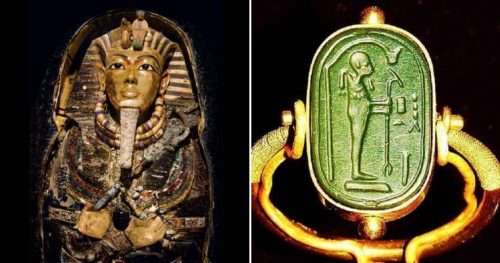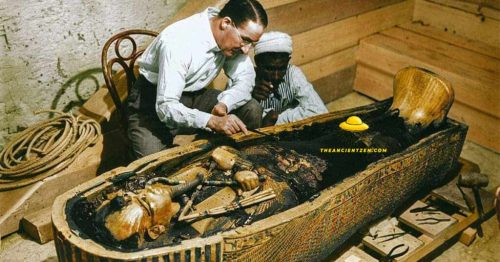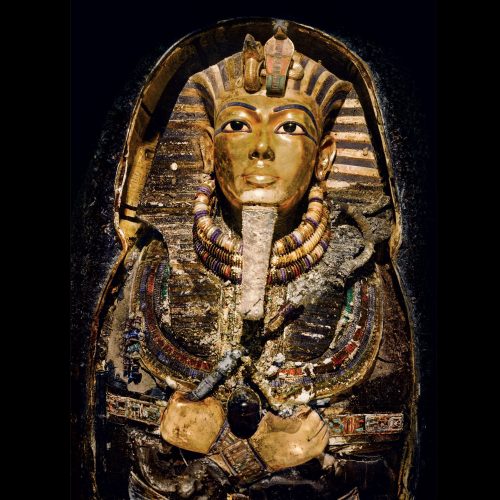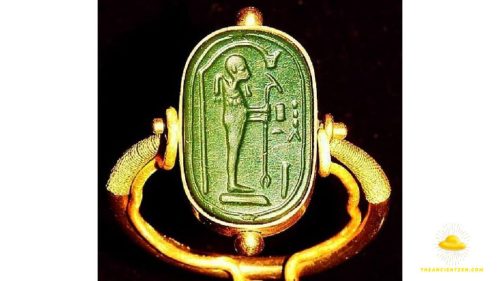
The discovery of Tutankhamun’s tomb in 1922 by British archaeologist Howard Carter marked a pivotal moment in Egyptology and captured the world’s imagination. Among the countless treasures found within the tomb,
one item stands out as particularly enigmatic – a mysterious ring with alien-like characteristics. In this article, we delve into the fascinating story of Tutankhamun’s tomb and the cryptic ring that continues to pique the curiosity of both scholars and conspiracy theorists.
Tutankhamun: The Boy Pharaoh
Tutankhamun, often referred to as the “Boy Pharaoh,” ascended to the throne of Egypt around 1332 BC, during the Eighteenth Dynasty. Despite his relatively short reign, his tomb remains one of the most significant archaeological discoveries in history.
Tutankhamun’s tomb, located in the Valley of the Kings, was unearthed with astonishing precision by Howard Carter, revealing a treasure trove of artifacts and insights into ancient Egyptian culture.
The Alien-Like Ring
Among the artifacts found in Tutankhamun’s tomb, the alien-like ring immediately caught the attention of the world. The ring is composed of a piece of yellow-brown stone, which has been identified as serpentine or jadeite, set into a gold band.

What makes it truly extraordinary, however, are the intricate carvings on the stone. These carvings depict what appear to be celestial objects, strange symbols, and what some claim to be an alien figure. The craftsmanship and level of detail in this ring have led many to wonder about its origin and significance.
The Theories
The discovery of the ring has spawned numerous theories about its origin and purpose. While some scholars argue that the ring’s design is consistent with other artifacts from the period, attributing it to the skilled artisans of ancient Egypt, others propose more speculative interpretations:
Extraterrestrial Connection: Some conspiracy theorists suggest that the ring is evidence of ancient contact with extraterrestrial beings. They argue that the alien-like figure depicted on the ring represents an otherworldly entity that visited Earth in antiquity. However, this theory lacks substantial scientific evidence and is largely dismissed by mainstream archaeologists.

Symbolic Significance: Many experts believe that the ring holds a symbolic meaning rather than representing an actual extraterrestrial encounter. The celestial objects and strange symbols on the ring may be linked to ancient Egyptian cosmology or religious beliefs, possibly indicating Tutankhamun’s desire for protection or guidance in the afterlife.
Personal Jewelry: Another theory is that the ring was a personal piece of jewelry belonging to Tutankhamun. This theory suggests that the young pharaoh may have had an interest in celestial objects or that the ring held personal significance to him, similar to how modern individuals wear jewelry with personal symbols or motifs.
The mysterious alien-like ring found in Tutankhamun’s tomb continues to captivate the imagination of people around the world. While some theories propose an extraterrestrial connection, most scholars lean towards interpretations rooted in ancient Egyptian culture, symbolism, and the personal significance of the ring to the young pharaoh.

As with many ancient artifacts, the true meaning and purpose of Tutankhamun’s ring may never be definitively determined. Nonetheless, its existence serves as a testament to the enduring allure of Egyptology and the ongoing quest to unlock the secrets of the past.
Whether the ring was crafted by skilled Egyptian artisans or carries a deeper, cosmic meaning, it remains a symbol of humanity’s enduring fascination with the mysteries of our history and the cosmos.






